
The ½d was first issued on 1 May 1935 perforated 14x13½. There were a double plate with two panes numbered 1A and 1B each with 240 stamps. Stamps on multiple watermarked paper from the same plate was issued on 20 March 1936. The sheets were in 10 rows of 24 and the printed sheets from the two panes were separated before being perforated.
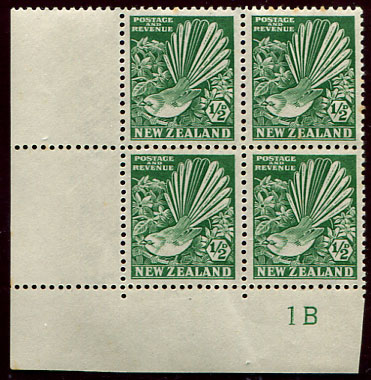
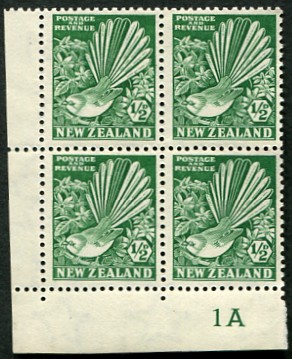
The first two example plate blocks have small numbers. The plate 1B block is on single watermarked paper while the plate 1A block is on multiple watermarked paper. In both cases, the perforations are from right to left as the holes extend into the left margin [1].
A plate with unnumbered panes was produced in 1936.
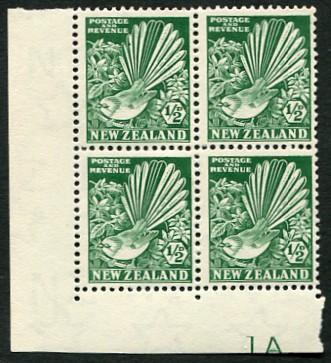
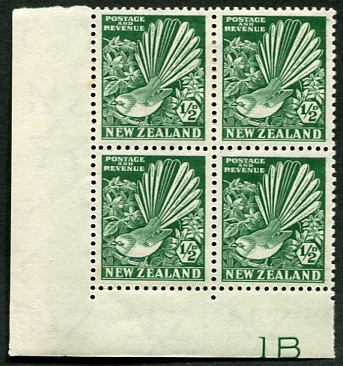
A further plate was produced in 1937.
Again the panes were numbered 1A and 1B, but the plate numbers were much larger.
The example plates !A and 1B have the perforations from left to right.
Clematis Flaw
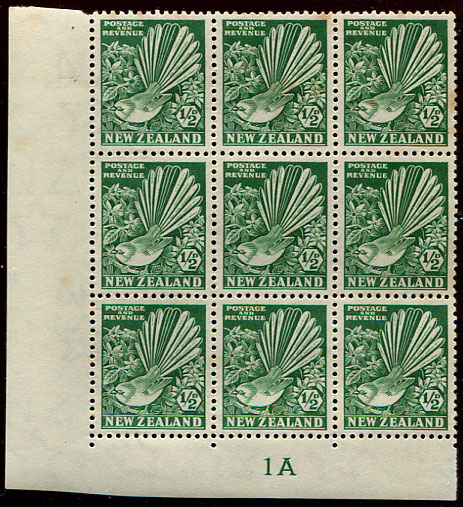
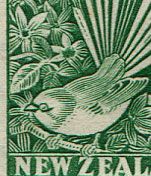
Clematis flaw

Normal
In R 8/1 on plate with small 1A, there is the flaw known as the Clematis flaw shown in the block on the left. It is in the centre of the clematis above the back of the bird. It first appeared on late printings on single watermarked paper.
Official

Stamps with multiple watermark
overprinted Official were issued in July 1937.
They were printed from the unnumbered plates.
The ½d was withdrawn on 28 February 1938
and the remaining stamps destroyed.
The above information is taken from The Postage Stamps of
New Zealand Vol 1 and 2 published by the
Royal Philatelic Society of New Zealand in 1938 and 1950.
All scans were made by the author.
[1] L Savins, The Engraved 1935 Pictorial Definitive Stamps of New Zealand and
the Directions of their Comb Perforations, The New Zealand Stamp Collector,
vol 89, no 2, pp 52 - 62, June 2009, published by the
Royal Philatelic Society of New Zealand .